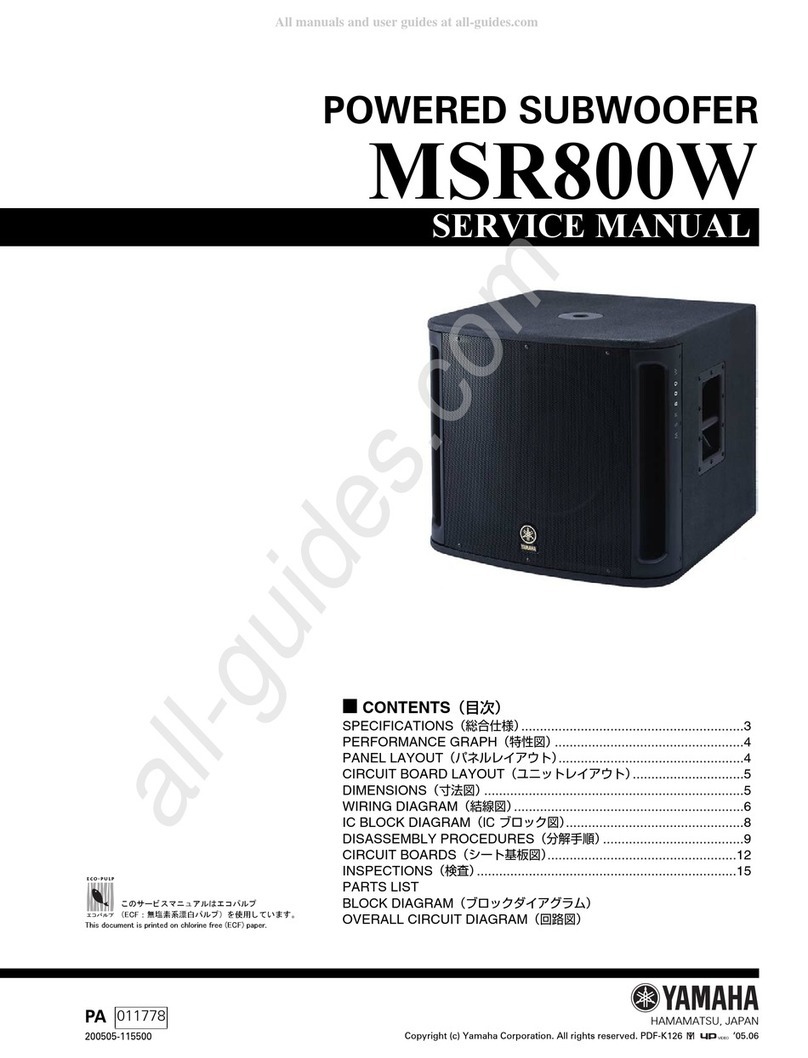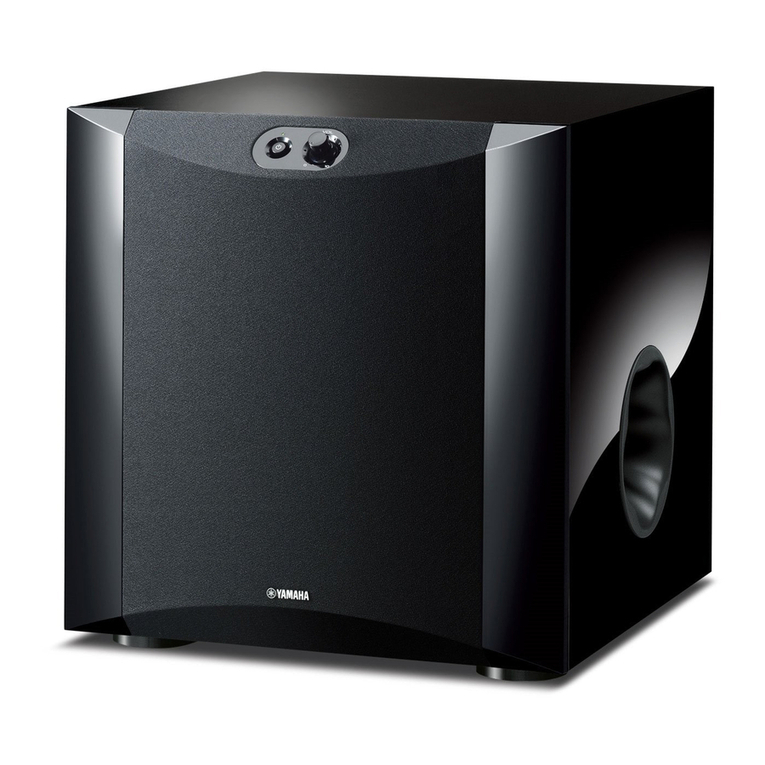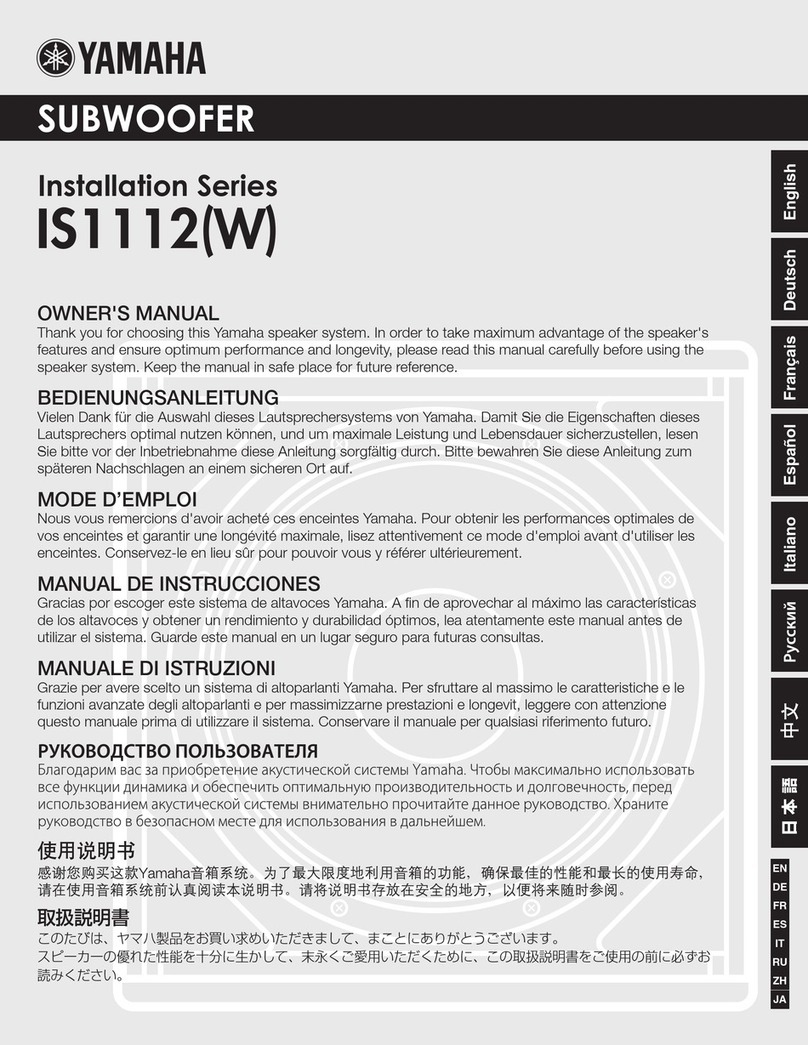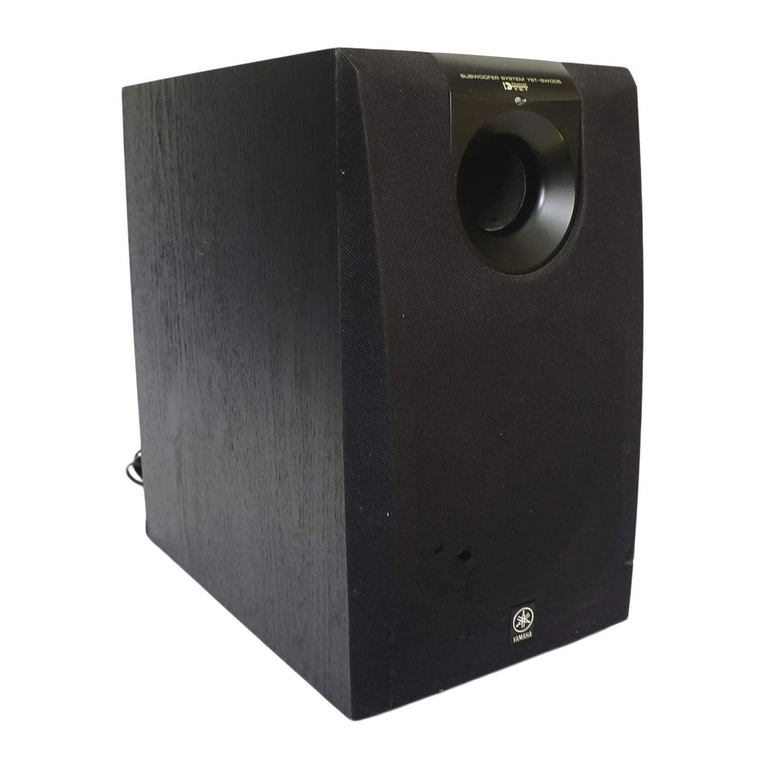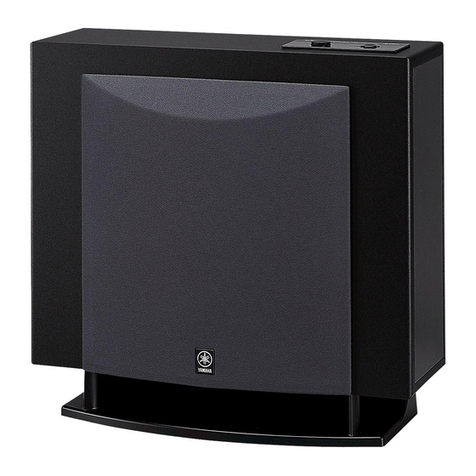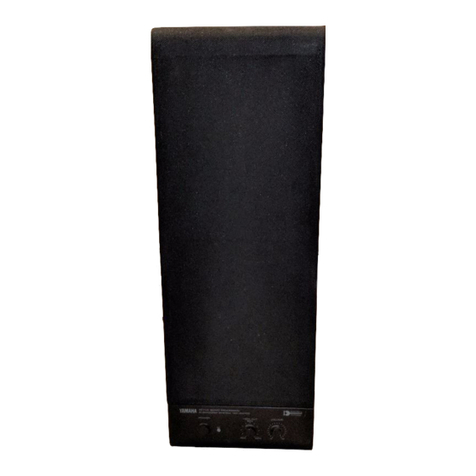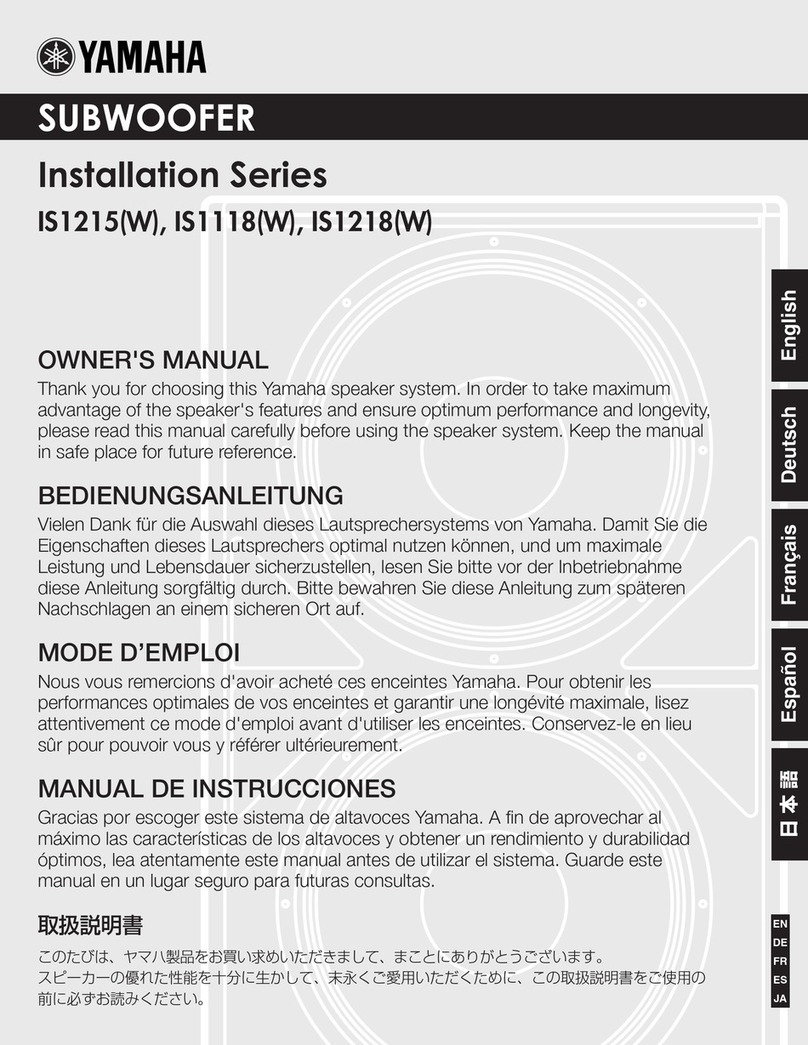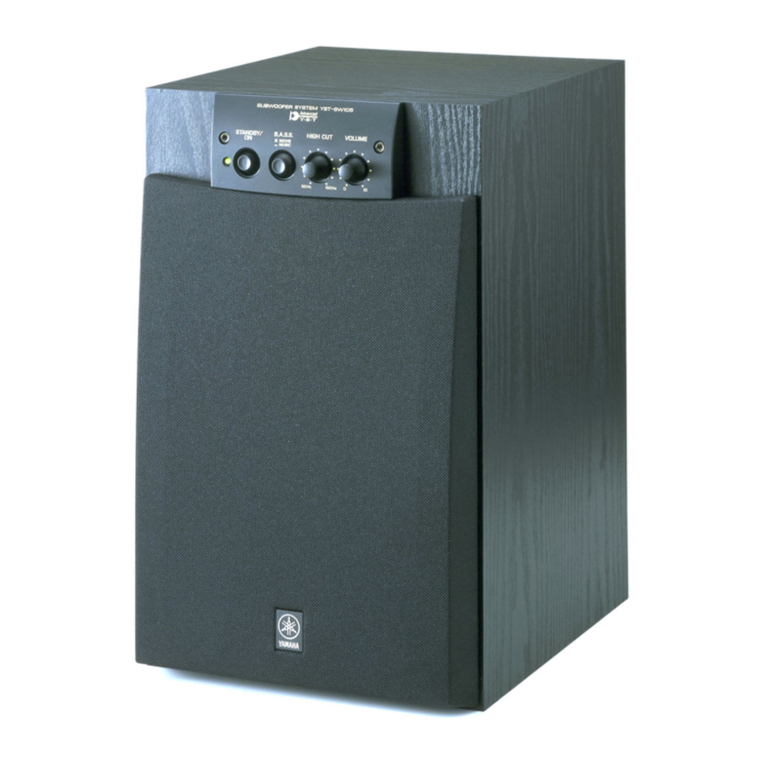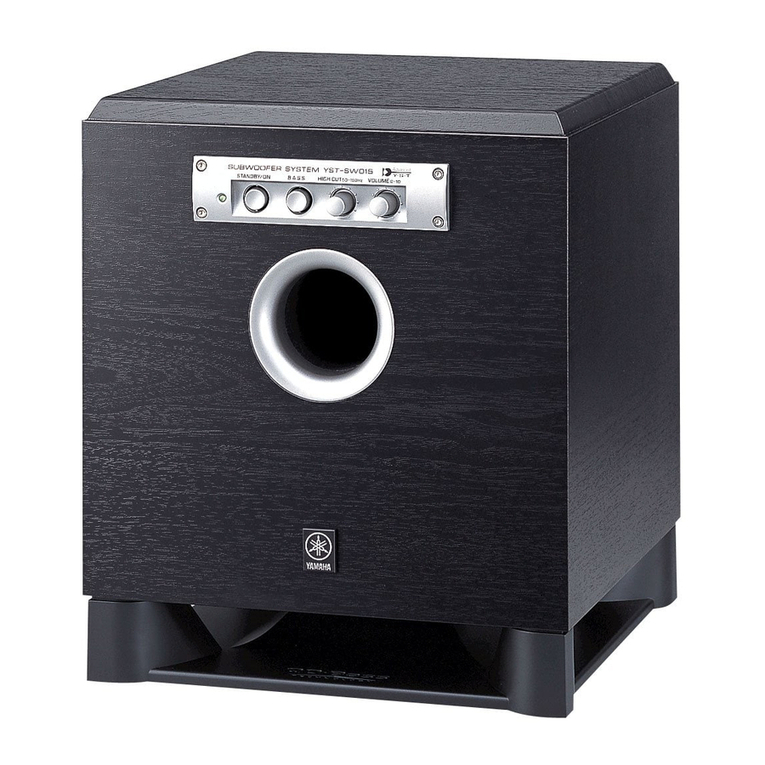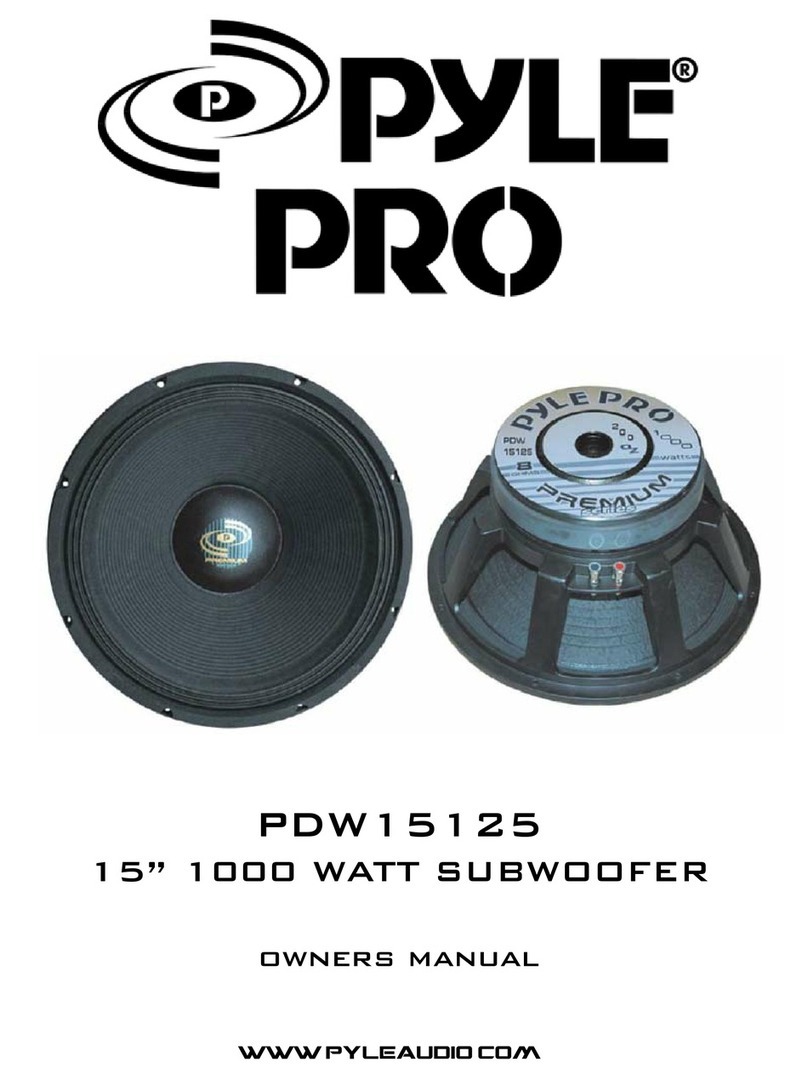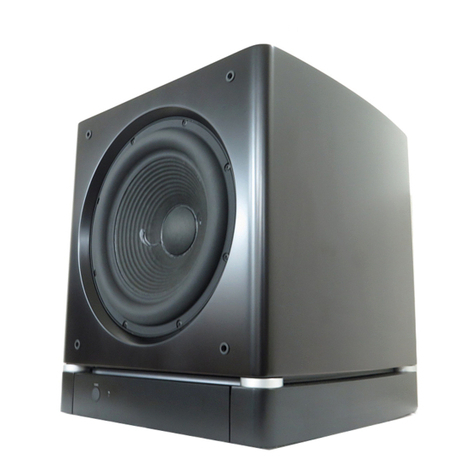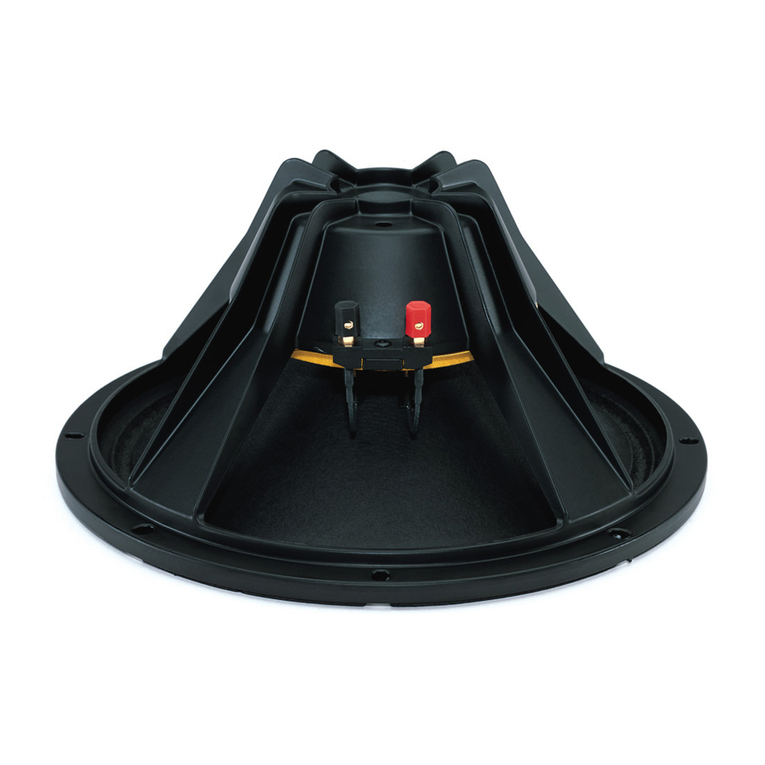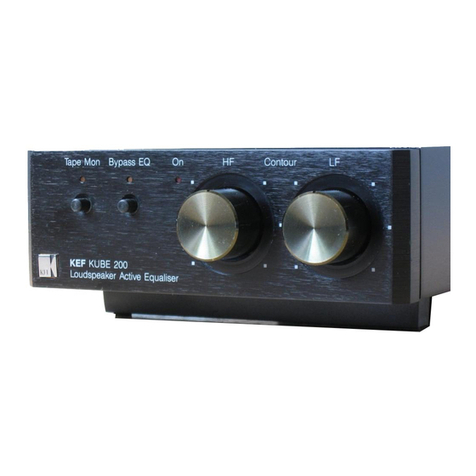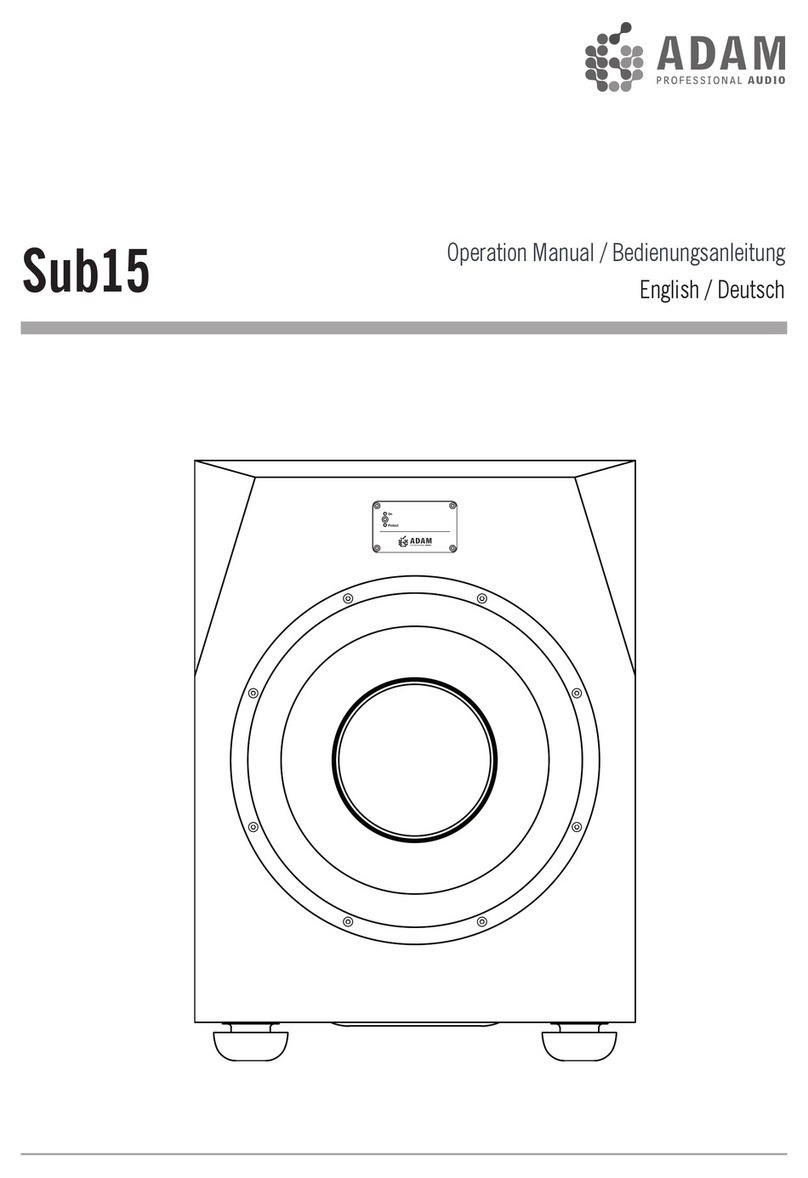
i En
Thank you for selecting this Yamaha subwoofer system.
Please read the following operating precautions before use.
Yamaha will not be held responsible for any damage and/or injury
caused by not following the cautions below.
• To assure the finest performance, please read this manual
carefully. Keep it in a safe place for future reference.
• Install this unit in a cool, dry, clean place - away from windows,
heat sources, sources of excessive vibration, dust, moisture and
cold. Avoid sources of humming (transformers, motors). To
prevent fire or electrical shock, do not expose this unit to rain or
water.
• Never open the cabinet. If something drops into the set, contact
your dealer.
• The voltage to be used must be the same as that specified on the
rear panel. Using this unit with a higher voltage than specified
is dangerous and may cause a fire and/or electric shock.
• To reduce the risk or fire or electric shock, do not expose this
unit to rain or moisture.
• Do not use force on switches, controls or connection wires.
When moving the unit, first disconnect the power plug and the
wires connected to other equipment. Never pull the wires
themselves.
• When not planning to use this unit for a long period (ie.,
vacation, etc.), disconnect the AC power plug from the wall
outlet.
• Since this unit has a built-in power amplifier, heat will radiate
from the rear panel. Place the unit apart from the walls, allowing
at least 20 cm of space above, behind and on both sides of the
unit to prevent fire or damage. Furthermore, do not position
with the rear panel facing down on the floor or other surfaces.
• Do not cover the rear panel of this unit with a newspaper, a
tablecloth, a curtain, etc. in order not to obstruct heat radiation.
If the temperature inside the unit rises, it may cause fire,
damage to the unit and/or personal injury.
• Do not place the following objects on this unit:
- Glass, china, small metallic etc.
If glass etc. falls by vibrations and breaks, it may cause bodily
injury.
- A burning candle etc.
If the candle falls by vibrations, it may cause fire and bodily
injury.
- A vessel with water in it
If the vessel falls by vibrations and water spills, it may cause
damage to the speaker, and/or you may get an electric shock.
• Do not place this unit where foreign objects such as water drips
might fall. It might cause a fire, damage to this unit, and/or
personal injury.
• Never put a hand or a foreign object into the YST port located
on the right side of this unit. When moving this unit, do not hold
the port as it might cause personal injury and/or damage to this
unit.
• Never place a fragile object near the YST port of this unit. If the
object falls or drops by the air pressure, it may cause damage to
the unit and/or personal injury.
• Never open the cabinet. It might cause an electric shock since
this unit uses a high voltage. It might also cause personal injury
and/or damage to this unit.
• When using a humidifier, be sure to avoid condensation inside
this unit by allowing enough spaces around this unit or avoiding
excess humidification. Condensation might cause a fire,
damage to this unit, and/or electric shock.
• Super-bass frequencies reproduced by this unit may cause a
turntable to generate a howling sound. In such a case, move this
unit away from the turntable.
• This unit may be damaged if certain sounds are continuously
output at high volume level. For example, if 20 Hz-50 Hz sine
waves from a test disc, bass sounds from electronic instruments,
etc. are continuously output, or when the stylus of a turntable
touches the surface of a disc, reduce the volume level to prevent
this unit from being damaged.
• If you hear distorted noise (i.e., unnatural, intermittent
“rapping” or “hammering” sounds) coming from this unit,
reduce the volume level. Extremely loud playing of a movie
soundtrack’s low frequency, bass-heavy sounds or similarly
loud popular music passages can damage this speaker system.
• Vibration generated by super-bass frequencies may distort
images on a TV. In such a case, move this unit away from the
TV set.
• Do not attempt to clean this unit with chemical solvents as this
might damage the finish. Use a clean, dry cloth.
• Be sure to read the “TROUBLESHOOTING” section regarding
common operating errors before concluding that the unit is
faulty.
• Install this unit near the wall outlet and where the AC power
plug can be reached easily.
• Secure placement or installation is the owner’s
responsibility. Yamaha shall not be liable for any accident
caused by improper placement or installation of speakers.
CAUTION: Read this before operating your unit.
This unit features a magnetically shielded design, but
there is still a chance that placing it too close to a TV set
might impair picture color. Should this happen, move
this unit away from the TV set.
This unit is not disconnected from the AC power source
as long as it is connected to the wall outlet, even if this
unit itself is turned off. In this state, this unit is designed
to consume a very small quantity of power.
